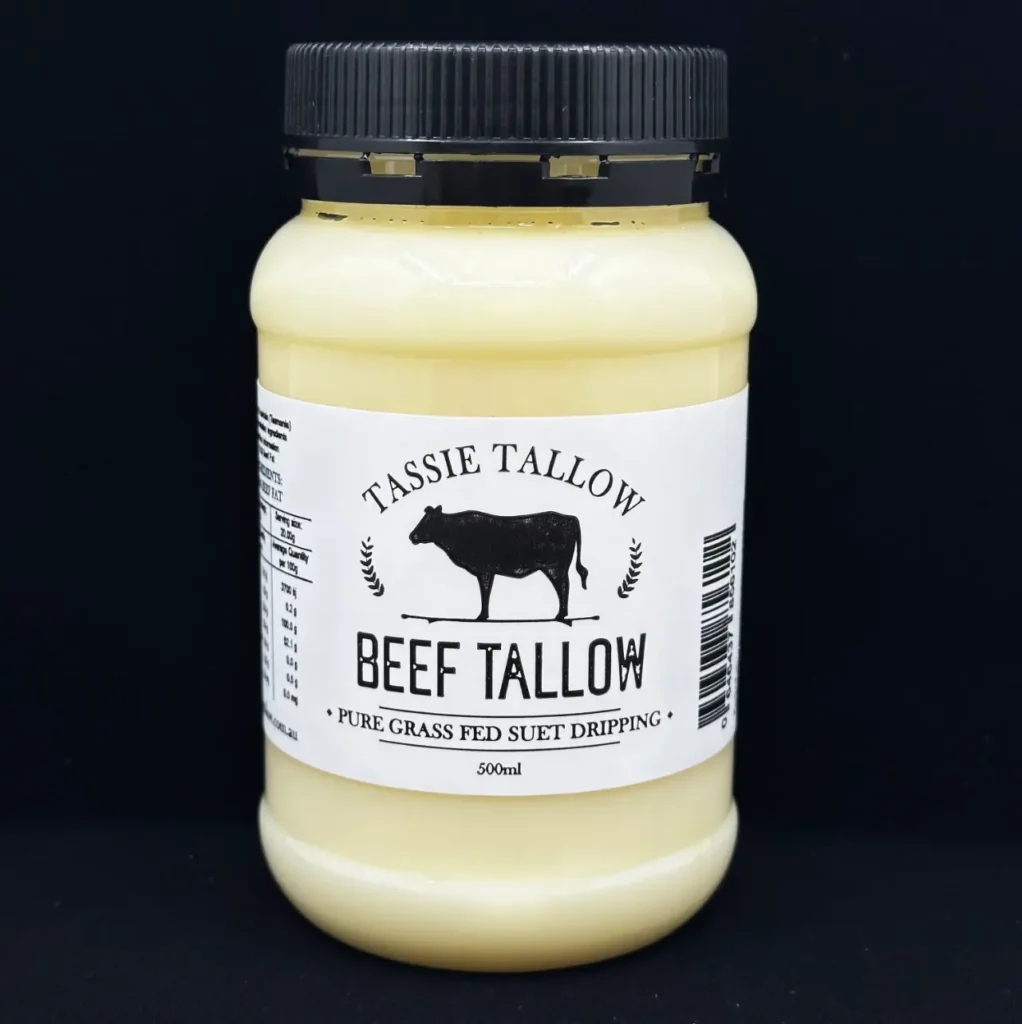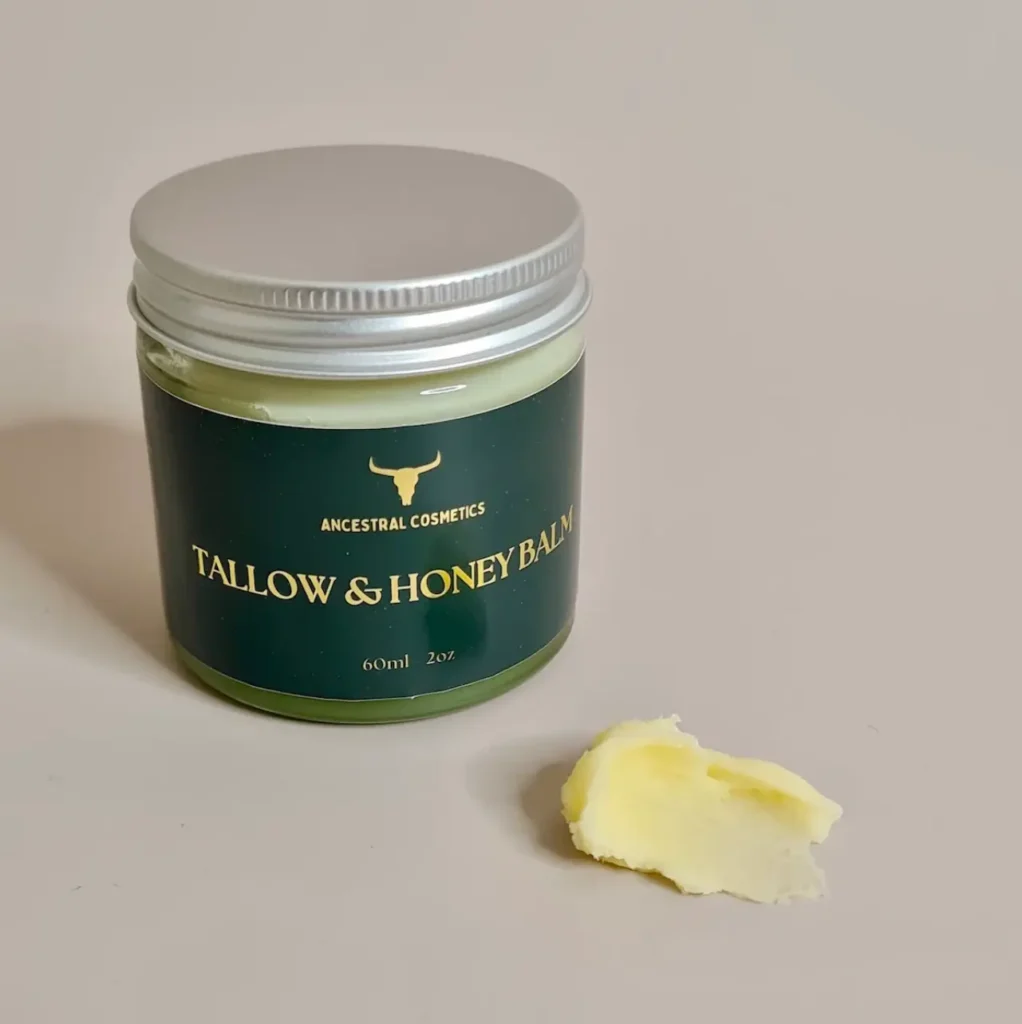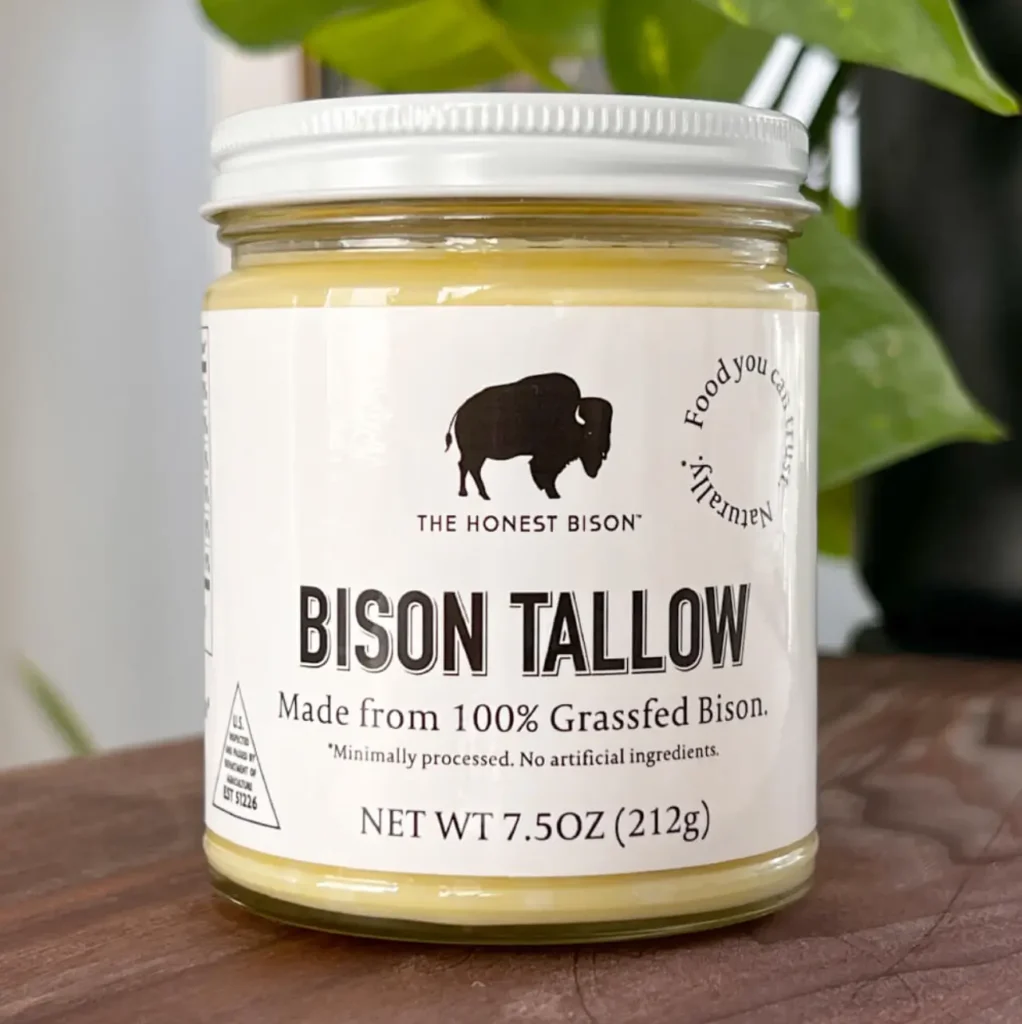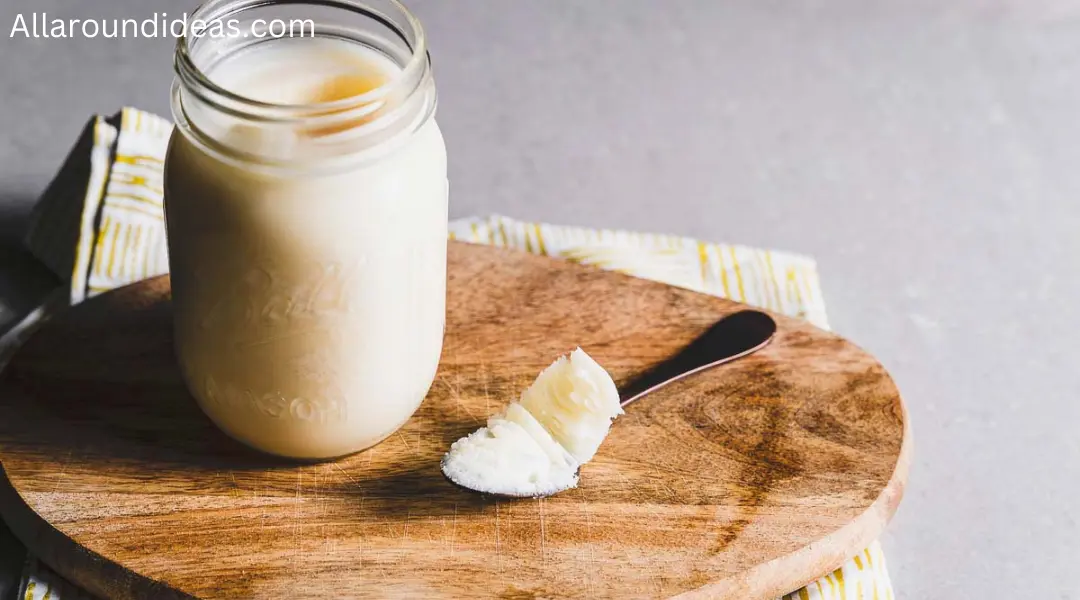Tallow is a versatile and traditional fat derived from the rendered fat of cattle, sheep, or other animals. Once a staple in kitchens and industries, it has recently seen a resurgence in popularity due to its various applications, ranging from cooking to skincare and beyond. This article will explores that what is tallow, its origins, various uses, benefits, and drawbacks, providing a comprehensive overview of this age-old substance.
What is Tallow?
Tallow is rendered animal fat, primarily sourced from beef or sheep. The rendering process involves slowly heating the fat to separate it from the connective tissues and impurities, resulting in a clean, stable fat. It is typically solid at room temperature and has a pale yellow or white color, depending on the animal’s diet and the rendering process.
If you are a fan of Macchiato and want some information about What is a Macchiato then checkout our previous blog post.

Origins of Tallow
Historically, tallow has been used for centuries in various cultures around the world. Before the widespread availability of vegetable oils, tallow was a primary cooking fat. It was commonly used in the production of soap, candles, and even as a lubricant for machinery. In many traditional societies, tallow was valued for its long shelf life and nutritional content.
Tallow’s significance can be traced back to pre-industrial times when every part of an animal was utilized to minimize waste. This practice was not only practical but also rooted in sustainability—a principle that many modern consumers are beginning to appreciate once more.
Uses of Tallow
Tallow has a wide range of applications across various industries, including:
1. Cooking and Baking
Tallow can be used as a cooking fat for frying, sautéing, and baking. Its high smoke point (around 400°F or 204°C) makes it suitable for high-temperature cooking methods. Many chefs appreciate its rich flavor, which can enhance the taste of meats and other dishes.
2. Skincare and Beauty Products
Tallow has gained popularity in the skincare industry due to its nourishing properties. Rich in fatty acids and vitamins A, D, E, and K, tallow can be used in moisturizers, balms, and soaps. Its composition closely resembles human skin fat, making it an effective moisturizer that penetrates deeply and nourishes the skin.
3. Soap Making
Tallow is a traditional ingredient in soap-making. When combined with lye, it produces a hard, long-lasting bar of soap with excellent moisturizing properties. Many artisanal soap makers incorporate tallow into their products to create a richer, creamier lather.
4. Candles
Tallow was once a common material for candle making. While paraffin wax has largely replaced it in modern times, some artisans still create tallow candles for their unique qualities, including a natural scent and longer burn time.
5. Industrial Applications
In industrial settings, tallow is used as a lubricant and in the manufacturing of biodiesel. Its stability at high temperatures and resistance to oxidation make it an excellent choice for various applications.
Pros of Tallow
1. Nutritional Value
Tallow is rich in essential fatty acids, particularly conjugated linoleic acid (CLA), which has been linked to numerous health benefits, including improved metabolic health and anti-inflammatory properties. Additionally, it contains vitamins A, D, E, and K, which contribute to overall health.
2. High Smoke Point
With a high smoke point, tallow is suitable for high-temperature cooking methods such as frying and roasting. This quality allows for versatility in the kitchen, making it a reliable choice for various culinary applications.
3. Long Shelf Life
Tallow has a long shelf life when stored properly. Its natural composition helps it resist rancidity, making it a valuable addition to any pantry. Properly rendered and stored tallow can last for months or even years without spoiling.
4. Sustainable Resource
Utilizing tallow aligns with sustainable practices by minimizing waste in meat production. When used alongside other parts of the animal, tallow contributes to a more holistic approach to food consumption.
5. Skin Compatibility
Tallow is particularly compatible with human skin due to its similar composition. It can help maintain skin hydration, soothe irritation, and provide a protective barrier. This quality makes it a sought-after ingredient in natural skincare products.
6. Versatile Uses
Tallow can be used for a wide variety of applications, from cooking and baking to skincare and candle making. This versatility makes it a valuable ingredient for those interested in traditional and sustainable practices.
If you are a fan of Macchiato and want some information about What is a Macchiato then checkout our previous blog post.

Cons of Tallow
1. Source and Ethics
The source of tallow can raise ethical concerns, particularly if derived from factory-farmed animals. Consumers who prioritize ethical sourcing may be hesitant to use tallow unless they can verify its origins and ensure it comes from humanely raised animals.
2. Dietary Restrictions
For individuals following vegetarian or vegan diets, tallow is not a suitable option. Its animal origins exclude it from plant-based diets, limiting its accessibility to certain populations.
3. Saturation and Heart Health
Tallow is high in saturated fats, which can raise concerns regarding heart health. While recent studies have suggested that saturated fats may not be as harmful as once thought, moderation is key, and those with specific health conditions should consult a healthcare professional before incorporating it into their diets.
4. Strong Flavor Profile
While many enjoy the rich flavor of tallow, its distinct taste may not appeal to everyone. Some individuals may find it overpowering or unpalatable in certain dishes, making it less versatile in the kitchen compared to neutral oils.
5. Storage Requirements
While tallow has a long shelf life, it still requires proper storage to prevent spoilage. It should be kept in a cool, dark place, and once opened, it’s advisable to refrigerate it to maintain freshness. This may be inconvenient for some users.
6. Limited Mainstream Availability
Although tallow is gaining popularity, it is not as widely available as other cooking fats, such as olive oil or coconut oil. Consumers may need to seek out specialty shops or online retailers to find high-quality.
How to Render Tallow at Home
For those interested in using it, rendering it at home can be a rewarding process. Here’s a simple method to render beef tallow:
Ingredients and Tools
- Beef fat (such as suet)
- A slow cooker or large pot
- A strainer or cheesecloth
- A container for storage (such as a glass jar)
Instructions
- Prepare the Fat: Cut the beef fat into small pieces. The smaller the pieces, the faster the rendering process will be.
- Heat the Fat: Place the fat in a slow cooker or large pot. If using a stovetop, use low heat to prevent burning.
- Render the Fat: Allow the fat to melt slowly. Stir occasionally to ensure even rendering. This process can take several hours (up to 6 hours in a slow cooker).
- Strain the Liquid: Once the fat is fully melted and clear, remove it from the heat. Carefully strain the liquid through a fine mesh strainer or cheesecloth into a clean container to remove any solid bits.
- Cool and Store: Allow the tallow to cool before sealing the container. Store it in a cool, dark place or in the refrigerator for extended shelf life.

Conclusion
Tallow is a traditional and versatile fat that has been utilized for centuries in cooking, skincare, and various industrial applications. Its rich flavor, nutritional benefits, and sustainable sourcing make it an appealing choice for those seeking to incorporate more natural products into their lives. However, it is essential to consider the ethical implications, dietary restrictions, and potential health concerns associated with its use.
As consumers increasingly seek out sustainable and wholesome ingredients, it may continue to reclaim its place in modern kitchens and beauty routines. Understanding its benefits and drawbacks will help individuals make informed choices about whether to incorporate this age-old ingredient into their lifestyles. Whether used for cooking, skincare, or crafting, it offers a wealth of possibilities for those willing to explore its many uses.
If you are a fan of Macchiato and want some information about What is a Macchiato then checkout our previous blog post.


